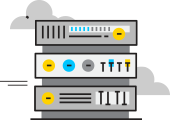Session fixation attack is a security vulnerability that targets web applications, particularly those relying on session management mechanisms. It is considered a severe threat to users’ privacy and sensitive information. Attackers exploit this vulnerability to force a user’s session ID to a known value, allowing them to hijack the user’s session, gain unauthorized access, and potentially perform malicious actions on behalf of the victim.
The history of the origin of Session fixation attack and the first mention of it
The concept of Session fixation attack was first identified and discussed in the early 2000s. In 2002, Amit Klein, an Israeli security researcher, coined the term and presented the attack technique during a Black Hat Briefings conference. He demonstrated how attackers could manipulate session IDs to compromise the security of web applications. Since then, the attack has remained a significant concern for web developers and security experts alike.
Detailed information about Session fixation attack. Expanding the topic Session fixation attack.
The Session fixation attack is an exploitation of the session management process in web applications. Typically, when a user logs into a website, the application generates a unique session ID. This ID is used to identify the user’s session during their visit to the site. The session ID is often stored in cookies or URLs and is passed between the user’s browser and the web server to maintain the session state.
In a session fixation attack, the attacker tricks the victim into using a pre-determined session ID that the attacker controls. There are several methods used to achieve this:
-
Uninitialized Session: The attacker accesses a vulnerable web application that fails to initialize a session ID for a user until they log in. The attacker can obtain their own session ID from the site and then entice the victim to log in using the provided session ID, thus fixing the victim’s session to the attacker’s control.
-
Session ID Prediction: Attackers might guess or predict the session ID generated by the web application. If the application uses a predictable algorithm to create session IDs, the attacker can craft a session ID in advance and force it on the victim.
-
Session ID Provision: The attacker might send a link to the victim with a valid session ID included. Once the victim clicks the link, their session becomes fixed to the provided ID, which the attacker can then control.
The internal structure of the Session fixation attack. How the Session fixation attack works.
A Session fixation attack typically involves the following steps:
-
Obtain a Session ID: The attacker gains a valid session ID either by accessing the application or by predicting the session ID generation process.
-
Share the Session ID: The attacker then shares the obtained session ID with the victim, enticing them to use it to log in to the target website.
-
Victim Logs In: The victim unwittingly logs in using the session ID provided by the attacker.
-
Hijack the Session: Once the victim’s session is fixed to the attacker’s provided ID, the attacker can take control of the session and perform actions on the victim’s behalf.
Analysis of the key features of Session fixation attack.
The Session fixation attack exhibits several key features that make it a potent threat:
-
Stealthy Exploitation: Since the attacker does not need to brute force or actively intercept the victim’s credentials, the attack can be relatively stealthy and challenging to detect.
-
Preparation and Social Engineering: Successful execution of the attack often relies on social engineering to trick the victim into using the provided session ID.
-
Session Management Vulnerabilities: The attack highlights vulnerabilities in how web applications handle session management, emphasizing the need for secure session handling mechanisms.
-
Authentication Bypass: By fixing the session to a known value, the attacker bypasses the normal authentication process, gaining unauthorized access.
Write what types of Session fixation attack exist. Use tables and lists to write.
Session fixation attacks can be classified based on different criteria:
Based on Attack Strategy:
- Pre-Login Fixation: Attacker provides the session ID before the victim logs in.
- Post-Login Fixation: Attacker provides the session ID after the victim logs in.
Based on Source of Session ID:
- Predictable Session ID: Attackers predict the session ID using algorithms or patterns.
- Stolen Session ID: Attackers steal the session ID from other users or systems.
Based on Target Session:
- User Session Fixation: The attacker fixes the victim’s session to gain control over their account.
- Administrator Session Fixation: The attacker targets an administrator’s session to gain elevated privileges.
Exploitation Scenarios:
- Data Theft: Attackers can steal sensitive information from the victim’s account.
- Unauthorized Access: Attackers gain unauthorized access to the victim’s account, impersonating them.
- Account Manipulation: Attackers can manipulate the victim’s account settings or perform malicious actions on their behalf.
Problems and Solutions:
-
Insufficient Session ID Generation: Web applications should use a strong and unpredictable session ID generation mechanism to prevent attackers from predicting or brute-forcing the IDs.
-
Secure Session Management: Implementing secure session management practices, such as regenerating the session ID upon login, can thwart session fixation attacks.
-
User Awareness: Educating users about potential threats and the significance of secure browsing can reduce the success rate of social engineering attacks.
Main characteristics and other comparisons with similar terms in the form of tables and lists.
| Characteristic | Session Fixation Attack | Session Hijacking | Cross-Site Scripting (XSS) |
|---|---|---|---|
| Type of Attack | Exploits session management to fix a known session ID on the victim. | Actively intercepts and steals an existing session ID. | Injects malicious scripts into web pages to compromise sessions. |
| Attack Vector | Sending a predetermined session ID to the victim. | Eavesdropping on network traffic to capture session ID. | Injecting malicious scripts into websites to capture session data. |
| Target | Web applications with vulnerable session management. | Web applications with insecure session handling. | Web applications with unsecured input fields. |
| Method of Compromise | Social engineering to trick the victim into using the attacker’s session ID. | Passive eavesdropping to capture an active session ID. | Injecting malicious scripts to capture session data. |
The battle between attackers and defenders will continue to evolve, leading to advancements in session security. Some future perspectives and technologies include:
-
Biometric Authentication: Integrating biometric authentication methods, such as fingerprint or facial recognition, can enhance session security and reduce the risk of fixation attacks.
-
Behavioral Analytics: Utilizing behavioral analytics to detect anomalous session behavior can help identify potential fixation attacks and other suspicious activities.
-
Token-Based Sessions: Implementing token-based sessions can enhance security by reducing the reliance on traditional session IDs.
-
Multi-Factor Authentication (MFA): Enforcing MFA for critical applications can add an extra layer of protection against session fixation attacks.
How proxy servers can be used or associated with Session fixation attack.
Proxy servers act as intermediaries between users and web servers, forwarding requests and responses on behalf of users. While proxy servers can enhance privacy and security, they can also be associated with session fixation attacks:
-
Request Manipulation: An attacker using a proxy server might intercept and manipulate the victim’s requests, injecting a predetermined session ID into the communication.
-
Session Prolongation: Proxy servers can extend the lifespan of sessions, making it easier for attackers to maintain control over a fixed session.
-
IP Spoofing: Attackers might use proxy servers with IP spoofing capabilities to hide their identity while executing session fixation attacks.
To mitigate these risks, proxy server providers like OneProxy should implement robust security measures and regularly update their systems to prevent misuse of their services for malicious purposes.
Related links
For more information about Session fixation attack, you can refer to the following resources:




